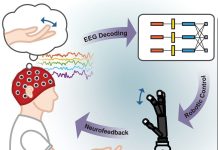
In a new study, researchers are the first to discover two distinct subtypes of schizophrenia after analyzing the brain scans of over 300 patients.
The first type showed lower widespread volumes of the gray matter when compared to healthy controls, while the second type had volumes largely similar to normal brains.
The findings suggest that, in the future, accounting for these differences could inform more personalized treatment options.
The research was conducted by Penn Medicine scientists.
Schizophrenia is a poorly understood mental disorder that typically presents with hallucinations, delusions, and other cognitive issues—though symptoms and responses to treatment vary widely from patient to patient.
Up until now, attempts to study the disease, by comparing healthy to diseased brains, has neglected to account for this heterogeneity, which has muddled research findings and undermined clinical care.
For example, previous studies have shown that people with schizophrenia have significantly smaller volumes of brain tissue than healthy controls.
However, for at least a third of patients, this was not the case at all—their brains were almost completely normal.
To better characterize the distinct brain differences within the schizophrenia patient population, the team established a research consortium that spanned three continents—the United States, China, and Germany.
They studied 307 schizophrenia patients and 364 healthy controls, all of whom were 45-years-old or younger.
The team then analyzed the brain scans using a machine learning method developed at Penn called HYDRA (Heterogeneity Through Discriminative Analysis).
The approach helps to identify “true disease subtypes” by limiting the influence of confounding variables.
After applying this machine learning method to the brain images, the researchers found that 115 patients with schizophrenia, or nearly 40%, did not have the typical pattern of reduced gray matter volume that has been historically linked to the disorder.
In fact, their brains showed increases in brain volume in the middle of the brain, in an area called the striatum, which plays a role in voluntary movement.
When controlling for differences in medication, age, and other demographics, the researchers could not find any clear explanation for the variation.
The team says the subtype 2 patients are very interesting, because they have similar demographics and clinical measures with subtype 1, and the only differences were their brain structures.
There are a variety of antipsychotic medications available to manage the symptoms of schizophrenia, but how they will affect a particular patient—both positively or negatively—is often a shot in the dark.
The team says now that scientists are starting to understand the biology behind this disorder, then they will hopefully one day have more informed, personalized approaches to treatment.
One author of the study is Christos Davatzikos, Ph.D., the Wallace T. Miller Professor of Radiology in the Perelman School of Medicine.
The study is published in Brain.
Copyright © 2020 Knowridge Science Report. All rights reserved.



